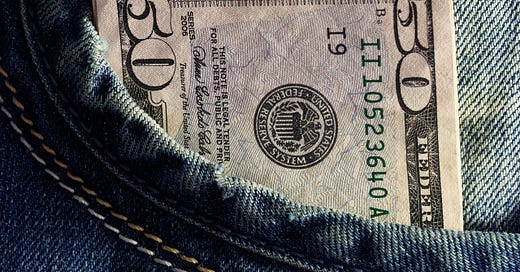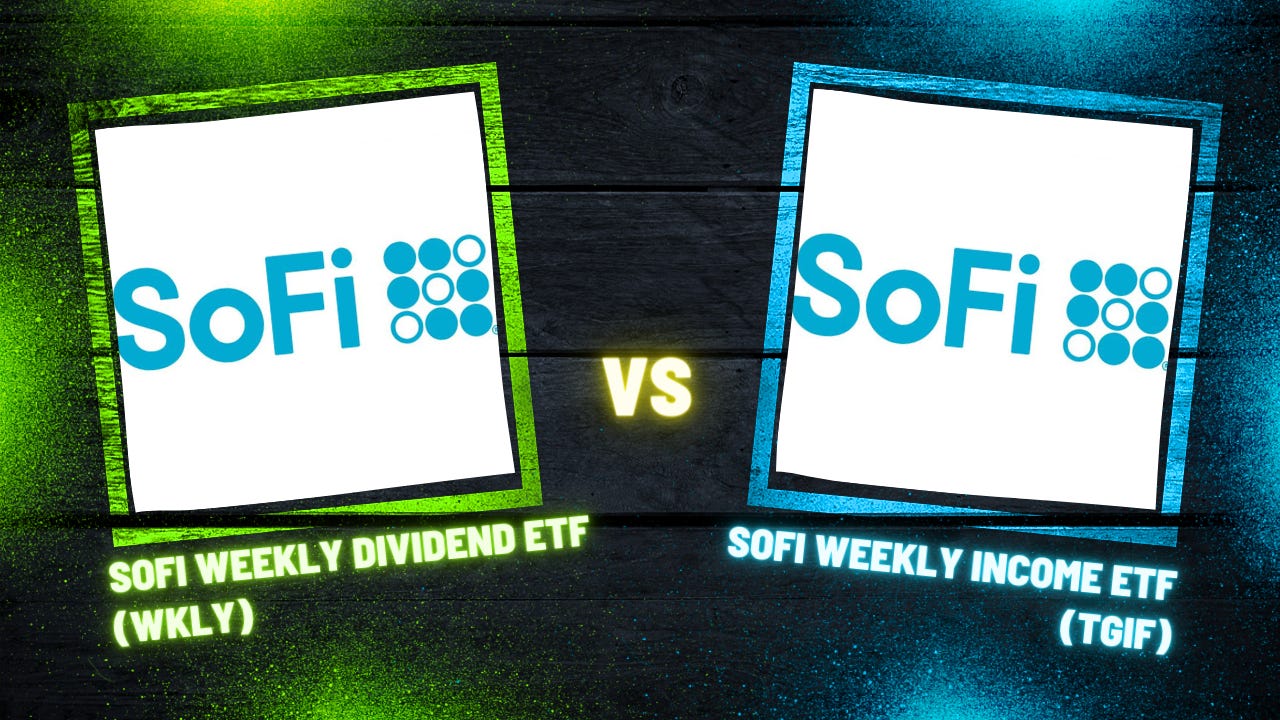What You May Have Missed This Week...
Weekly dividend ETFs, the 2 ETF "Couch Potato" portfolio and the S&P 500 vs. 60/40
In addition to the regular posts here on Substack, I also publish ETF research and notes over on my blog, ETF Focus.
In case you wanted to catch up on the latest research above and beyond what you’re reading here, this is a quick list of some of the most recent articles from the blog!
NOBL: The Rise Of Dividend Growth Stocks
2023 has been all about the "magnificent 7" stocks. The dominance of just a handful of mega-cap tech names has provided little opportunity for other areas of the market to outperform the S&P 500. Dividend stocks, in general, have badly underperformed the index so far this year, but the news hasn't been all bad. One of the funds trying to make a comeback in the ProShares S&P 500 Dividend Aristocrats ETF (NOBL).
Looking For Weekly Dividend Income From Your Investment Portfolio? These 2 ETFs Have You Covered!
Dividend ETFs can be a great way to produce a regular, steady stream of income within your portfolio. Most equity ETFs deliver dividend payments on a quarterly. That's fine, but it can also be a little inconvenient if you're living off of your portfolio or using it to pay ongoing expenses. Bond ETFs are even better because they usually pay dividends on a monthly basis. How about getting income on a weekly basis? Sound good? You'll be happy to hear then that there is a pair of ETFs that do just that!
The 4 Lowest-Cost Dividend ETFs of 2023
Dividend investors often tout the "snowballing" effect of reinvested dividends, and that's all fine and dandy. But do you know what else snowballs over time to get bigger? Investment fees. That's right – the expense ratios on ETFs can also add up over time and cause a drag on your returns. All else being equal, the lower cost ETF will generally exhibit higher long-term net returns and lower tracking error compared to a similar, higher cost counterpart.
JEPI vs DIVO: Which High-Yield Covered Call ETF is Better?
I'm always on the lookout for alternatives to popular ETFs, mainly so I have a viable list of tax-loss harvesting partners. By looking for ETFs with similar holdings and historical performance, yet different indexes, investors can avoid running afoul of the 30-day wash sale rule imposed by the IRS. When it comes to the JPMorgan Equity Premium Income ETF (JEPI), there aren't many alternatives. For now, I think the most viable alternative is the Amplify CWP Enhanced Dividend Income ETF (DIVO).
DIVB: A New Heavyweight Among Dividend ETFs
The iShares Core Dividend ETF (DIVB), formerly the iShares U.S. Dividend & Buyback ETF, has been around since 2017 and has about $260 million in assets. That doesn't really qualify it as a blockbuster, especially by BlackRock's lofty standards, but over the past few months it's become worthy of another look.
There are two big reasons for this.
A Simple 2-ETF "Couch Potato" Portfolio for Dividend Investors
Believe it or not, I hate managing my portfolio. I already spend all day writing about different ETFs and investing strategies, so the last thing I want to do is tinker excessively. For this reason, I consider laziness a virtue when it comes to investing. Sometimes, staying hands off is the best thing to do. Set dividend reinvests and auto-contributions on and rebalance it once a year.
Want a 5% Yield With Very Low Risk? Check Out These 5 Treasury Bill ETFs
If you've been hearing a lot of chatter about an 'inverted yield curve' and wondering what that really means for your wallet, you're not alone. Simply put, an inverted yield curve happens when short-term loans (like a 2-year loan) pay more interest than long-term ones (like a 10-year loan). Weird, right? Now, here's where it gets interesting: many financial experts view this upside-down situation as a warning sign of a possible recession, or economic slowdown, coming our way. It's like the economy's version of storm clouds gathering on the horizon.
S&P 500 vs. The 60/40 Portfolio: Which Is Better? (ETF Battles)
In this episode of ETF Battles, it’s an audience requested contest between all market ETFs, the WisdomTree U.S. Efficient Core ETF (NTSX) and the Vanguard S&P 500 ETF (VOO). Each ETF is judged against the other in key categories like cost, exposure strategy, performance, and a mystery category. Find out who wins the battle.












